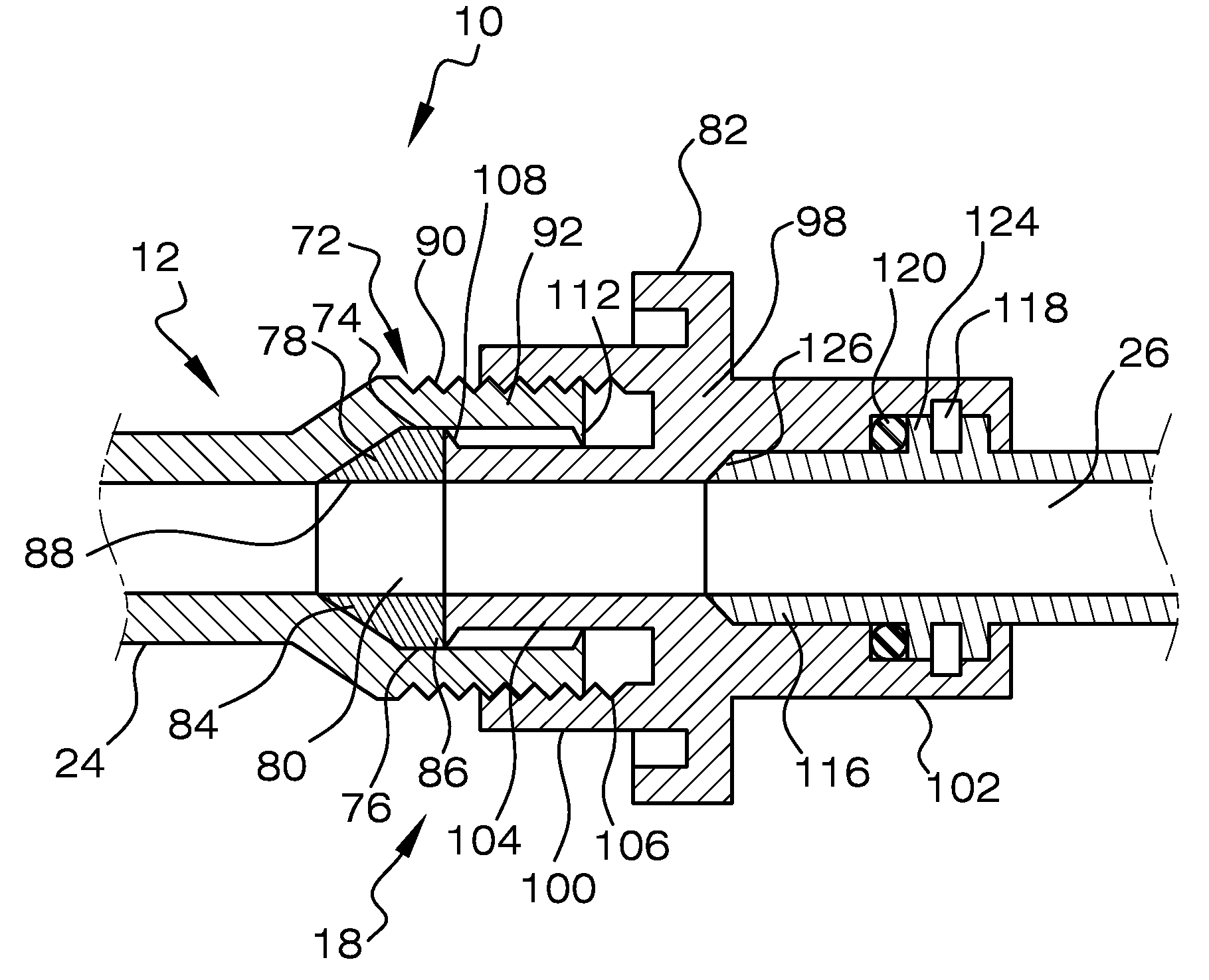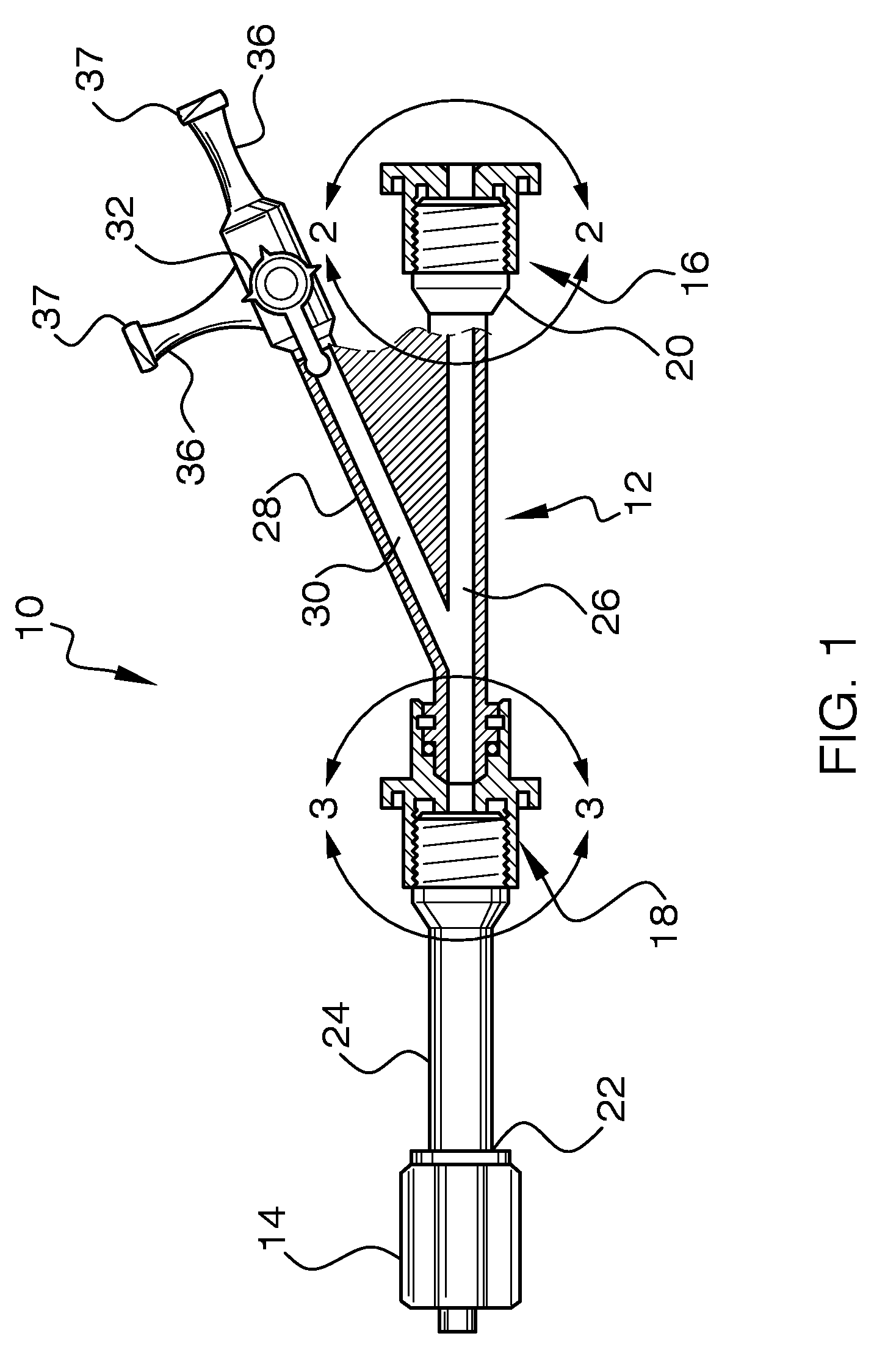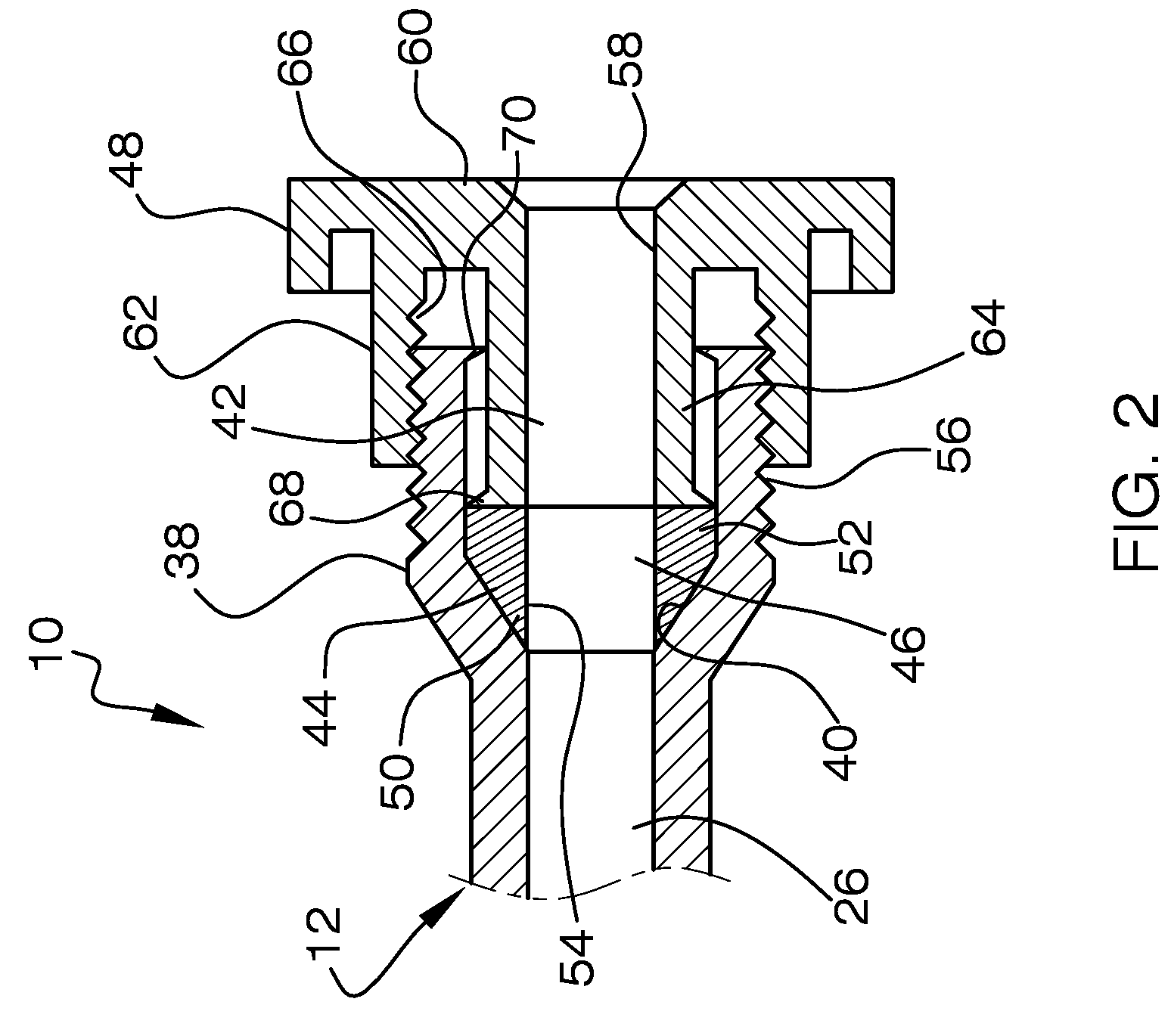Hemostasis valve
a technology of hemostasis valve and valve body, which is applied in the field of hemostasis valve, can solve the problems of hemostasis loss, large amount of blood and other fluids that can be lost from the patient, and the removal and insertion of another medical instrument, so as to prevent blood loss
- Summary
- Abstract
- Description
- Claims
- Application Information
AI Technical Summary
Benefits of technology
Problems solved by technology
Method used
Image
Examples
Embodiment Construction
[0023]Referring now to the drawings, the same reference numerals are used to identify like parts of the illustrated embodiments. The present invention relates to an improved hemostasis valve apparatus that minimizes the loss of body fluids during insertion, repositioning or removal of intravascular medical instruments.
[0024]Referring now to FIG. 1, which illustrates a hemostasis valve 10 according to the present invention. The hemostasis valve 10 includes a valve body 12, a rotatable connector 14, a first valve 16, and a second valve 18. The first and second valves 16 and 18 are longitudinally spaced along the valve body 12. The valve body 12 has a proximal end 20, an opposing distal end 22, an intermediate barrel portion 24, and a through-lumen 26. Rotatable connector 14 is positioned at the distal end 22 of the valve body 12. Rotatable connector 14 is an example of a means for rotatably coupling said valve body 12 in fluid communication with a catheter or other medical device. The...
PUM
 Login to View More
Login to View More Abstract
Description
Claims
Application Information
 Login to View More
Login to View More - R&D
- Intellectual Property
- Life Sciences
- Materials
- Tech Scout
- Unparalleled Data Quality
- Higher Quality Content
- 60% Fewer Hallucinations
Browse by: Latest US Patents, China's latest patents, Technical Efficacy Thesaurus, Application Domain, Technology Topic, Popular Technical Reports.
© 2025 PatSnap. All rights reserved.Legal|Privacy policy|Modern Slavery Act Transparency Statement|Sitemap|About US| Contact US: help@patsnap.com



